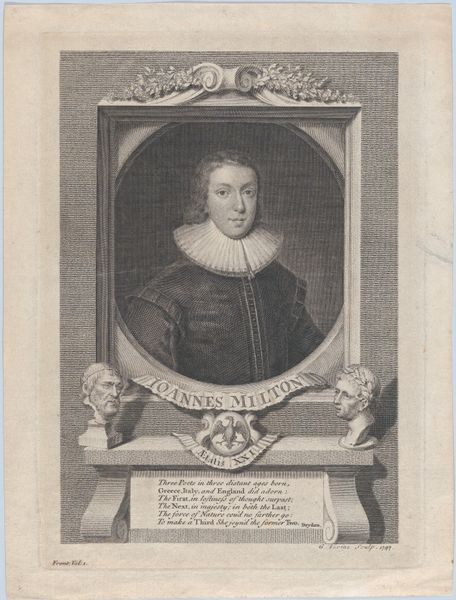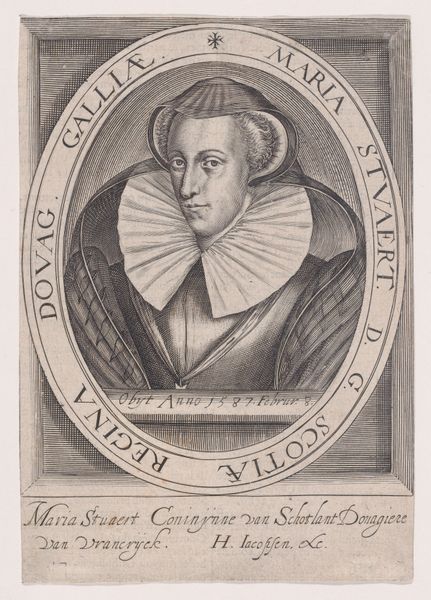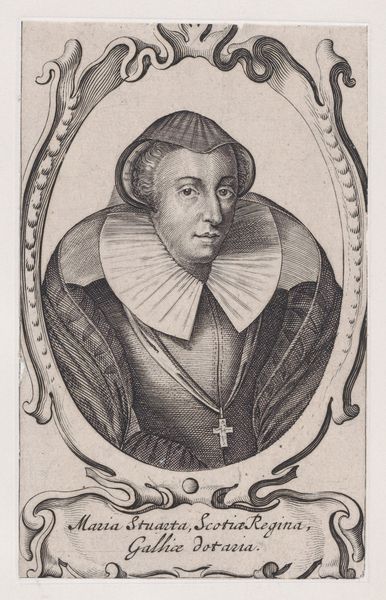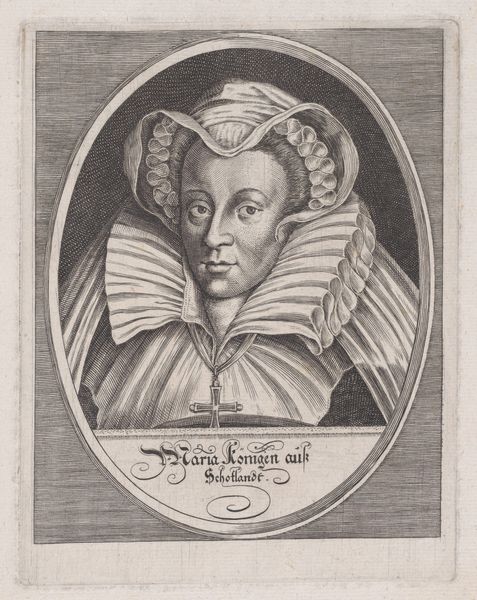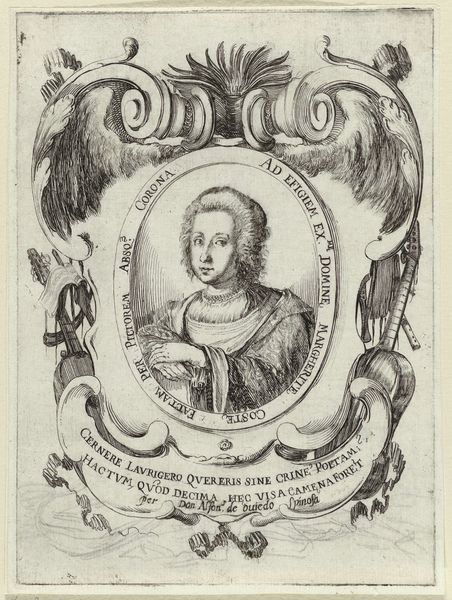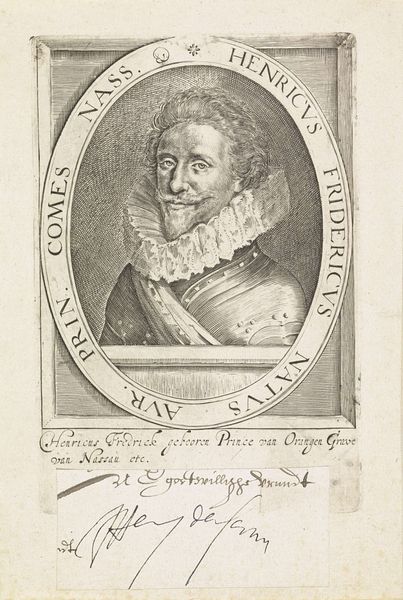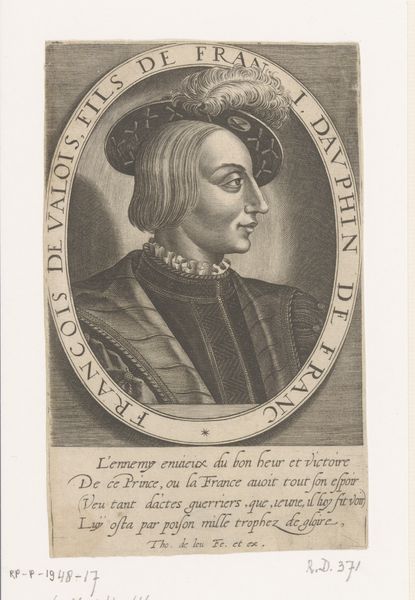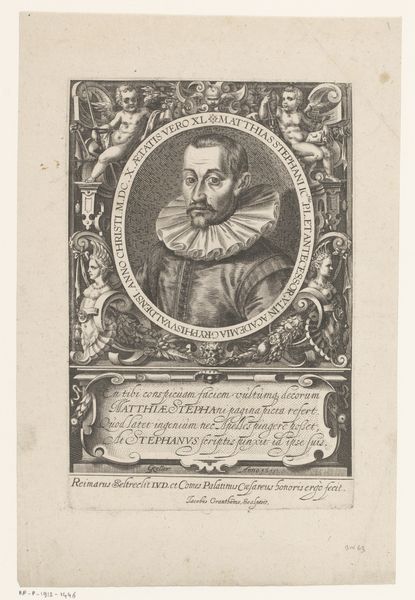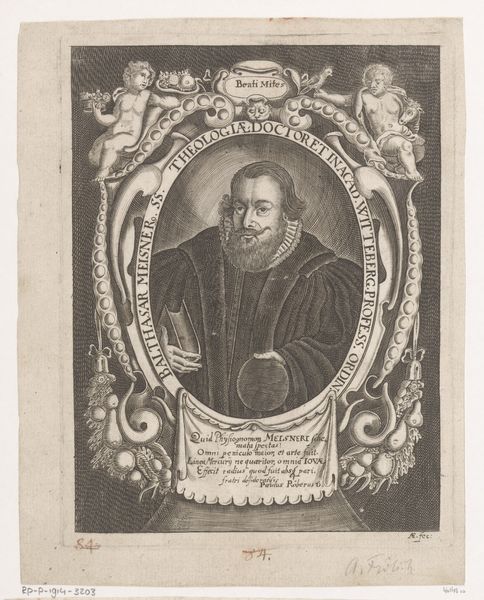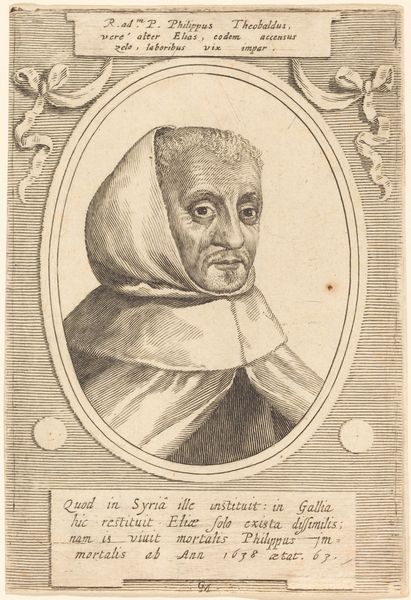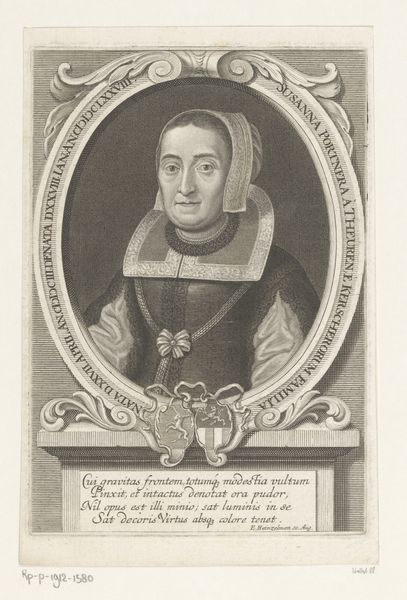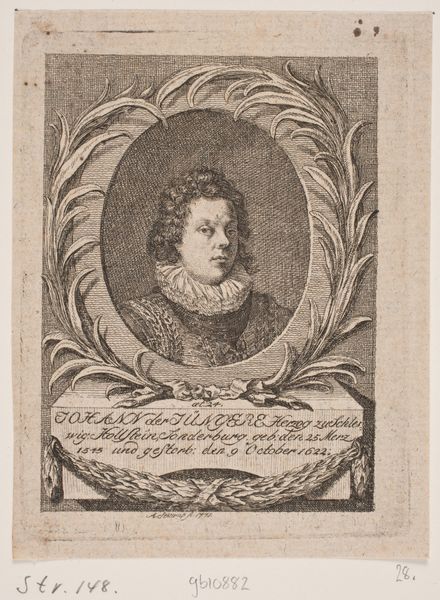
Mary, Queen of Scots (from "Histoire de la guerre de Flandre," volume 2, folio 598) 1665
0:00
0:00
drawing, print, engraving
#
portrait
#
drawing
#
baroque
# print
#
engraving
Dimensions: Sheet: 5 7/16 × 3 3/8 in. (13.8 × 8.5 cm)
Copyright: Public Domain
Editor: This is a rather haunting engraving from 1665, "Mary, Queen of Scots," from "Histoire de la guerre de Flandre." It seems incredibly detailed, especially considering it's a print. All that labor for a reproduced image! What's your take on this piece? Curator: The intense detail and precision highlight the engraver’s skill, certainly. But I am drawn to consider the labor involved, the very physical process of carving those fine lines into a metal plate. Think about the social context: who was commissioning these engravings, who was consuming them, and what impact did readily available reproduced imagery have? Was it a democratizing force, bringing images of royalty to a wider audience, or did it simply reinforce existing power structures? Editor: That's a good point. It's easy to see it as just a portrait, but it speaks to a larger system of production and consumption. Does the medium—the print itself—change our understanding of Mary, Queen of Scots? Curator: Absolutely. Engraving allowed for mass production and dissemination. Consider the quality of the paper, the ink used; these were commodities produced and distributed through established trade networks. Was this particular print a valued luxury object meant for private collection, or more functional – bound inside history books and destined for wider circulation, subject to wear and tear, the vagaries of use? Each possibility casts a different light on the role it played within its society. Editor: So it's not just about *who* Mary was, but also about how this image of her was made and consumed, and what that tells us about 17th-century society? Curator: Precisely. The print becomes a material object imbued with social and economic meaning far beyond its representational function. Editor: I never thought about it that way. This changes my whole perspective on engravings. Curator: It's about tracing the artwork's life through its materials and modes of production. Material analysis unveils how intertwined art and society really are.
Comments
No comments
Be the first to comment and join the conversation on the ultimate creative platform.
